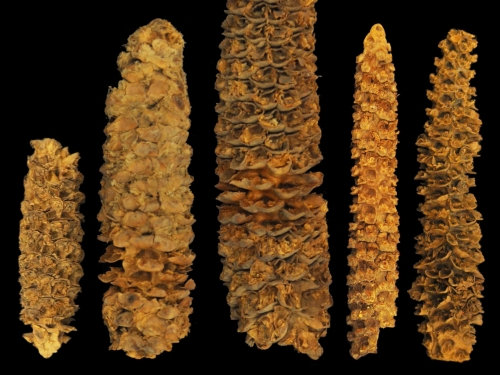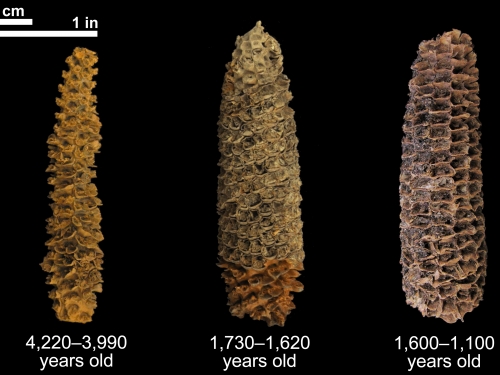Three roughly 2,000-year-old corn cobs from the El Gigante rock shelter site in Honduras. These corn cobs were genetically analyzed by an international team of scientists.
In the Dec. 14 issue of the journal the Proceedings of the National Academy of Sciences, Logan Kistler, curator of archaeogenomics and archaeobotany at the Smithsonian’s National Museum of Natural History, and an international team of collaborators report the fully sequenced genomes of three roughly 2,000-year-old cobs from the El Gigante rock shelter in Honduras. Analysis of the three genomes reveals that these millennia-old varieties of Central American corn had South American ancestry and adds a new chapter in an emerging complex story of corn’s domestication history.
Taken together with recent studies about the domestication of corn in this region, these latest findings suggest that something momentous may have occurred in the domestication of corn about 4,000 years ago in Central America, and that an injection of genetic diversity from South America may have had something to do with it.




